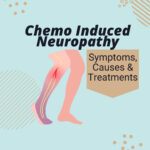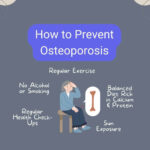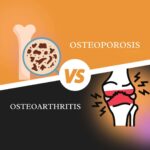Are you or a loved one experiencing joint discomfort and finding it difficult to move around? Arthritis is a disease that affects more than 50 percent of adults over the age of 65 and causes pain and inflammation.
This blog post will provide helpful information about the symptoms, causes, and treatments for arthritis in elderly individuals. Let’s dive in to better understand this widespread condition and how to manage it effectively!
To learn how to prevent arthritis, make sure to read our article on expert tips to prevent arthritis.

Key Takeaways
- Arthritis is a common condition in elderly individuals, affecting over 50% of adults over 65 years old.
- Symptoms include pain, stiffness, swelling, and tenderness. It can also lead to decreased range of motion, fatigue, and weakness.
- Arthritis can be caused by age – related wear and tear on joints, genetics, previous joint injuries, obesity, and inflammation.
- Treatment options may include pain medications, physical therapy exercises, assistive devices like braces or splints. Early diagnosis is important for effective management.
What is Arthritis?
Arthritis is a condition characterized by joint pain and swelling, inflammation, stiffness, and tenderness. It affects the hands, knees, hips, spine, and other joints in the body. There are different types of the condition that can affect the elderly population.
Definition
Arthritis means your joints are in pain. It is a sickness that makes them swell up. Over 100 different types of arthritis exist. Some common ones include osteoarthritis and rheumatoid arthritis, inflammatory arthritis, juvenile idiopathic arthritis and gout.
They are all different but have one thing in common – they hurt your joints and make them stiff or hard to move.
Types of Arthritis
There are many types of arthritis. The first kind is Osteoarthritis. This type happens when the cartilage that cushions your joints breaks down over time. Also known as Degenerative Joint Disease, osteoarthritis is common with older adults as it is caused by deterioration of the connective tissues that connect muscle and bone and maintain the integrity of the joint.
Another one is Rheumatoid arthritis, an autoimmune disease where your body attacks its own tissues by mistake. This mainly harms the lining of your joints. To learn about the differences, make sure to read our article on rheumatoid arthritis vs. osteoarthritis.
Gout is a painful type of arthritis caused by too much uric acid in your body. It forms hard crystals in your joints, often starting with the big toe.
Psoriatic arthritis affects some people who have psoriasis, a skin condition.
Prevalence in the Elderly
Many elderly adults have arthritis. More than half of the seniors in the US have some form of this disease. Even more, about 80% show signs of it on an X-ray.
This makes the condition a big cause of disability for many aging adults.
Symptoms of Arthritis in the Elderly
Elderly individuals may experience pain, stiffness, swelling and tenderness, decreased range of motion, as well as fatigue and weakness.
Joint pain and stiffness
Arthritis in the elderly often causes pain and stiffness. This means that your joints may feel uncomfortable and difficult to move. It can be especially bothersome when trying to do everyday activities like walking or picking things up.
The pain can vary from mild to severe, and it may affect multiple joints in your body. Osteoarthritis is known for causing persistent and intense pain along with stiffness.
If you’re experiencing these symptoms, it’s important to talk to your doctor for proper diagnosis and the right treatment.
Swelling and tenderness
When you have osteoarthritis or rheumatoid arthritis, your joints can become swollen and tender. This means that the affected joints may feel puffy and sore to the touch.
The swelling in your joints can make them look larger than usual and feel tight. You might also notice redness or warmth around the swollen area. It’s important to pay attention to these signs because they can indicate inflammation.
Tenderness refers to sensitivity or discomfort when pressure is applied to the affected joints. For example, it may hurt when you try to grip something tightly if you have hand arthritis.
The combination of swelling and tenderness can affect your mobility and make it difficult for you to perform normal activities like walking or using your hands.
Decreased range of motion
Arthritis in the elderly can cause a decreased range of motion. This means that it becomes harder to move your joints and do activities like bending or reaching. It can make it difficult to perform daily tasks, such as getting dressed or doing household chores.
Exercise and physical activity may also become more challenging. The symptoms of arthritis, including the decreased range of motion, tend to worsen as you get older. Conditions like obesity, diabetes, and heart disease can further impact your mobility.
Arthritis primarily affects the joints where bones meet and move, leading to limited movement over time.
Fatigue and weakness
Arthritis in the elderly can cause fatigue and weakness, making it difficult to carry out daily activities. Fatigue can be caused by factors such as inflammation, pain, lack of physical activity, and lifestyle choices.
Medications used to treat arthritis may not effectively alleviate fatigue and could even cause drowsiness. It is important for older adults to manage their energy levels by pacing themselves, getting enough restorative sleep, and engaging in gentle exercises that promote muscle strength and flexibility.
By adopting a balanced approach and taking care of their overall well-being, elderly individuals can combat fatigue and weakness associated with arthritis.
Causes and Risk Factors
Arthritis in the elderly can be caused by age-related wear and tear on joints, genetics, previous joint injuries, obesity, and inflammation. Risk factors include aging itself, family history, and being overweight or obese.
Age-related wear and tear
As we age, our joints go through heavy wear, which can lead to arthritis. This is because the cartilage in our joints becomes more brittle and less capable of repairing itself over time.
This degeneration of the joints is known as osteoarthritis, which is the most common form of arthritis associated with aging. It happens when the protective cartilage starts to deteriorate.
Factors such as weakening muscles, weight gain, and previous joint injuries can increase the risk as we get older. Taking care of our joint health by staying active with gentle exercise and maintaining a healthy weight can help prevent or manage age-related tear on our joints.
Genetics
Genetics play a role in the development of the disease, especially among the elderly. Some people are born with specific genes that increase their chances of developing certain types of arthritis, like rheumatoid arthritis and lupus.
Additionally, having a family history of arthritis can also increase your risk. Certain genetic markers, like HLA-B27, have been linked to a higher risk for certain forms of arthritis.
While genetics alone may not cause arthritis, they can make you more susceptible to it when combined with other factors such as aging or joint injuries.
Previous joint injuries
If you have had a joint injury before, it can increase your risk of developing arthritis as you get older. Injuries to your joints, like from accidents or sports activities, can cause damage that leads to arthritis later in life.
This is especially true for osteoarthritis, which is the most common type of arthritis in elderly people. When the cartilage between your bones breaks down due to injury, it can cause pain and stiffness in your joints.
Taking care of your joint health and avoiding injuries can help reduce your risk of developing arthritis as you age.
Obesity
Obesity is a condition where a person has too much body fat. It can increase the risk of developing arthritis in older adults. Being overweight puts extra pressure on the joints, especially the knees.
This can cause damage to the cartilage. Obesity is also linked to other health problems like heart disease and diabetes. Losing weight can help reduce symptoms, especially in weight-bearing joints like the knees.
So it’s important for elderly individuals who are obese to maintain a healthy weight through exercise and proper diet to prevent or manage the disease better.
Inflammation
Inflammation is a common problem in arthritis. It happens when the joints become swollen and painful. Inflammation can cause damage to the cartilage and bone in the joints, making them stiff and hard to move.
This can make it difficult for elderly people to do everyday tasks like walking or picking things up. Gouty arthritis is a type that happens when crystals build up in the joints, causing inflammation and severe pain.
Inflammation is a key factor in many forms of arthritis, so managing it through medication, therapy, or lifestyle changes is important for reducing pain and improving mobility.
Diagnosis and Tests for Arthritis in the Elderly
The diagnosis in the elderly involves a physical examination, imaging exams, and blood tests.
Physical examination
During a physical examination, the doctor will check your joints for any swelling, redness, or warmth. They will also assess how well you can move your joints and if there are any limitations in mobility.
The range of motion in your knees, hips, hands, and spine will be evaluated. This helps the doctor determine if arthritis is causing your joint pain and stiffness. Sometimes, arthritis can even lead to changes in the shape of your joints over time.
Physical examination is an important step in diagnosing and testing for arthritis in older adults.
Imaging exams
Imaging exams like X-rays, MRI, CT scans, and ultrasound are helpful in diagnosing the condition. They can provide clear pictures of the bones and joints affected by arthritis.
These tests are commonly used to diagnose osteoarthritis, which is a common type of arthritis in older people. X-rays are particularly useful for diagnosing arthritis in the foot and ankle, showing if there is any narrowing of joint spaces.
The results from imaging tests can help doctors assess how severe the arthritis is and keep track of how it is progressing over time.
Blood tests
Blood tests can be an important tool in diagnosing arthritis and other inflammatory diseases. While there is no specific blood test for arthritis, these tests can provide valuable information about your overall health and help doctors rule out other conditions.
Blood samples are often tested for markers of inflammation and immune system activity, which can indicate the presence of conditions like rheumatoid arthritis or gout. In some cases, blood tests may also be used to monitor kidney function in patients.
So, if your doctor orders a blood test as part of your diagnosis or treatment plan, it’s because they want to gather more information that will help guide your care.
Treatment Options
Treatments may include medications for pain relief and inflammation, physical therapy, assistive devices, red light therapy, lifestyle modifications, and surgical interventions.
Medications for pain relief and inflammation
To manage arthritis-related pain and inflammation, there are several medications available. Nonsteroidal anti-inflammatory drugs (NSAIDs) like ibuprofen and naproxen can help reduce both pain and inflammation.
Another NSAID called celecoxib can also provide relief from symptoms. If you have mild to moderate pain, acetaminophen (Tylenol) may be a suitable option, although it doesn’t specifically target inflammation.
Over-the-counter options like oral pain relievers or creams can also be helpful in managing symptoms. Commonly used NSAIDs for arthritis pain include ibuprofen, diclofenac, and naproxen.
Physical therapy
Physical therapy is an important way to help you manage your arthritis. It can help alleviate pain, improve joint function, and enhance overall quality of life. Physical therapy includes exercises to strengthen muscles around the affected joints and improve flexibility.
This can lead to reduced pain and improved mobility. Physical therapists may also recommend the use of braces or splints to support the joints and reduce discomfort. The goal of physical therapy is to help elderly individuals avoid surgery and prescription painkillers, while still achieving pain relief and improved joint function.
Assistive devices
Assistive devices can be very helpful for elderly individuals with arthritis. These devices are designed to support and assist the joints, making daily activities easier and less painful.
For example, mobility aids like canes, crutches, and walkers can reduce stress on certain joints and improve balance. Reachers and adaptive equipment can also help with tasks such as picking up objects or getting dressed.
Supportive devices like braces and orthotics provide stability and relieve pain in damaged joints. There are even kitchen tools specifically designed for individuals with arthritic hands, which can make cooking and meal preparation much easier.
Red light therapy
Red light therapy is a method to relieve your pain and improve symptoms for elderly individuals. It has been found to reduce osteoarthritis-related pain by more than 50%.
Not only that, but it has also shown positive results in improving symptoms of tendinitis. Red light therapy devices have been approved by the FDA for pain relief, and they work by repairing tissue and reducing inflammation. Visit CuraYou to read all about the scientific research on red light therapy for arthritis & joint pain.
For elderly patients with degenerative osteoarthritis of the knee, red light therapy can effectively provide relief from both pain and disability.
Lifestyle modifications
To manage arthritis in the elderly, making certain lifestyle modifications can be helpful. One important change is to stay physically active and engage in regular exercise. Physical activity can reduce pain, improve function, and enhance overall well-being for seniors.
It’s also crucial to maintain a healthy weight, as excess body weight puts extra stress on the joints. Losing weight can significantly benefit arthritis management in older adults.
Additionally, dressing warmly, exercising indoors, or using heat therapy may help relieve arthritis pain in the elderly. By incorporating these lifestyle changes into their daily routine, seniors can better manage their symptoms and enjoy a healthier aging process.
Surgical interventions
When other treatments do not provide sufficient relief, surgical interventions can be considered. Joint replacement surgery is a common option, where damaged joints are replaced with artificial ones to reduce pain and improve mobility.
Arthroscopy is another surgical procedure that involves inserting a small camera into the joint to diagnose and treat issues like inflammation or cartilage damage. Joint fusion surgery helps stabilize and reduce pain in severely damaged joints by fusing them together.
Other procedures that may be used include cartilage repair procedures, synovectomy to remove inflamed tissue, osteotomy for realigning bones, joint lavage to flush out debris, arthroplasty for reshaping or replacing joint surfaces, joint debridement to remove damaged tissue, and tendon reconstruction if tendons are affected.
Conclusion
In conclusion, arthritis in the elderly can cause joint pain, swelling, and stiffness. It is important to recognize the symptoms early and seek treatment options such as medications, physical therapy, and lifestyle modifications.
Arthritis can make life difficult for elderly. With proper care and management, individuals can improve their quality of life and maintain their mobility for longer periods of time. Red light therapy may help reduce symptoms and causes. Quality living with arthritis is possible, so don’t let the disease slow you down – take control of your health and stay active!
FAQs
1. What are the common symptoms of arthritis in the elderly?
Arthritis usually includes symptoms of joint pain, stiffness, swelling, reduced range of motion, and difficulty performing daily activities – depending on the kind of arthritis.
2. What causes arthritis in the elderly?
The disease can be caused by a combination of factors like age-related wear and tear, previous joint injuries, or genetic predisposition. People with underlying medical conditions are more likely to develop arthritis.
3. Can arthritis in the elderly be cured?
While there’s no cure for arthritis, managing the disease effectively is possible with medications, physical therapy exercises, lifestyle changes like weight management and regular exercise.
4. How is arthritis in the elderly treated?
Arthritis causes pain. Thus, treatments often include pain relievers like acetaminophen or nonsteroidal anti-inflammatory drugs (NSAIDs), corticosteroid injections to reduce inflammation, physical therapy exercises to improve strength and flexibility, and assistive devices for joint support or symptom relief.
5. How can I prevent or reduce joint pain from arthritis?
To prevent or reduce joint pain: maintain a healthy weight to lessen stress on joints; engage in low-impact exercises like swimming or cycling; apply heat/cold packs; use assistive devices like braces; take prescribed medications regularly as directed by your healthcare provider.
References
https://www.cdc.gov/arthritis/basics/types.html
https://orthoinfo.aaos.org/en/treatment/total-joint-replacement/
- Best Red Light Therapy Device 2024 for Pain Management – 16 October 2024
- How To Improve Gut Microbiome – 26 May 2024
- Chemo neuropathy treatment: What to do? – 19 May 2024





